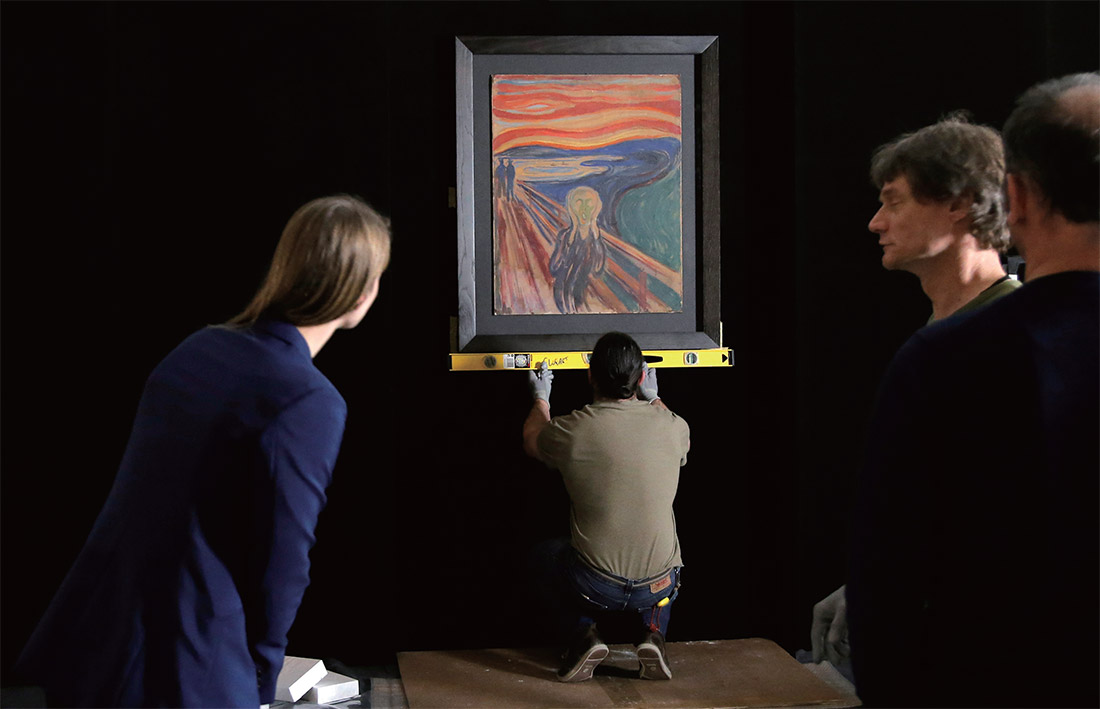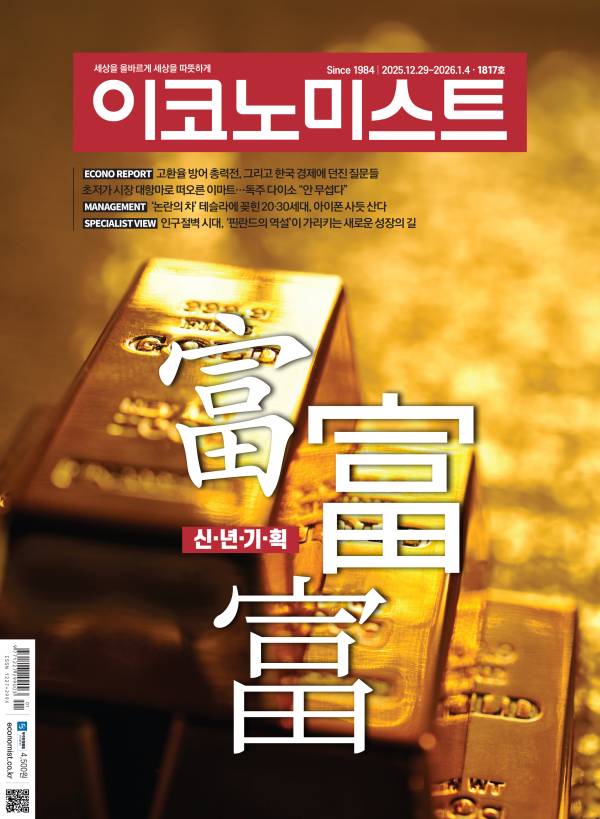- 세월에 묻힌 그림 찾아낸다

THIS LIE TELLS THE TRUTH
A graphene-based scanner sees through layers of paint.Graphene has become something of a scientific manna in recent years, with studies heralding bendable computer touch screens, long-lasting batteries, water desalination and ultrapowerful solar cells, among others, all built on what is the world’s thinnest (and potentially strongest) material. Think of any intractable problem, and graphene might be the silver bullet. By the end of 2014, over 25,000 patent applications based on graphene had been submitted globally.
One unlikely benefactor of this miracle of modernity: the world of fine art. A group of European researchers working on a project called INSIDDE are developing a graphene-based scanner that they say penetrates deep beneath layers of paint, dirt and other materials to unveil previously unknown features of both two- and three-dimensional artwork—without laying a finger, let alone a scalpel, on the often delicate cultural artifacts.
It’s the latest in a growing toolkit of imaging technologies that art conservators can draw on to investigate paintings and other works. Infrared devices, for example, can put out wavelengths between 700 and 3,500 nanometers “to penetrate layer by layer, to sort of peel back images,” on a piece of art, says Kristin deGhetaldi, a painting conservator and Ph.D. candidate at the University of Delaware. This is how, for example, a team of researchers discovered that there might be a “hidden” painting beneath Pablo Picasso’s 1901 work The Blue Room. Then there are X-rays, which can be used to penetrate beyond the surface layer of a painting and identify certain pigments with high atomic number metals— think lead in white paint and mercury in vermilion—buried beneath, says Jennifer Mass, a senior scientist at the Winterthur Museum in Delaware. Mass was part of a team that used cutting-edge X-ray technology in 2014 on The Blue Room to reveal what was buried beneath: a painting of a bearded man wearing a bow tie.
But there are limitations to these technologies: Pigments with low atomic numbers like ultramarine don’t show up on X-rays, and infrared imaging is mostly limited to revealing the underdrawings in paintings. The new graphene-based device uses terahertz radiation, which falls between infrared and microwave radiation on the electromagnetic spectrum, and its inventors say it can reach intermediate layers in paintings that even infrared can’t access. They have been working with the Asturias Fine Art Museum in Oviedo, Spain, to test the device in real-world environments, and early results seem positive: “With the prototype we have been able to clearly distinguish between some pigments, which in some cases will avoid having to puncture the painting in order to find out what materials the artist used,” said Marta Flórez Igual, a conservator and restorer at Austerias, in a recent press release.
The scanner is still in a trial and calibration phase. “It’s too early to tell what it offers,” says deGhetaldi, and ultimately, widespread adoption will likely depend on cost. The best infrared systems cost up to $100,000, and digital X-ray systems aren’t cheap either. Javier Meana, a project manager on the INSIDDE team, says that early estimates suggest their graphene scanner will ultimately cost about $27,500 each.
Even if it does become conventional in conservation labs, it probably won’t be able to fully replace the gold standard in fine art preservation science: Take the tiniest of paint samples (“the size of a period at the end of a sentence in 10-point Times New Roman font,” as Mass puts it), encase it in resin, cut it into a cross section and do all sorts of experiments on it.
“I don’t care what fancy imaging technique brings me,” says deGhetaldi. “At the end of the day, if we are going to make any definite statements about the painting, I am going to have to take a microscopic sample.”
But that doesn’t mean terahertz imaging won’t serve a purpose. “With each new noninvasive technique,” says Mass, “We’re getting closer to the information you can get with a cross-section sample. I think terahertz imaging will add something to our ability to the nondestructive study of objects of art.”
세월에 묻힌 그림 찾아낸다
신소재 그래핀으로 만든 테라헤르츠 스캐너, 적외선도 접근할 수 없는 그림 중간층 볼 수 있어근년 들어 신소재 그래핀을 하늘이 내려준 과학적 선물처럼 많이 여긴다. 대표적으로 휘는 컴퓨터 터치스크린, 오래 가는 배터리, 물의 담수화 처리, 초강력 태양전지를 예고하는 연구가 쏟아져 나온다. 모두 예외 없이 세계에서 가장 얇은 (그리고 잠재적으로 가장 강력한) 소재가 그 밑바탕에 자리 잡고 있다. 어떤 까다로운 문제에 부닥치더라도 그래핀이 해결사 역할을 해줄지 모른다. 지난해 말까지 세계적으로 그래핀을 바탕으로 한 특허 신청이 2만5000건 이상 출원됐다.
이 같은 최신 기술의 혜택은 상식적인 범위를 뛰어넘어 세계 미술계에까지 미친다. INSIDDE라는 프로젝트를 진행하는 유럽 연구팀이 그래핀 기반 스캐너를 개발 중이다. 그림 표면을 덮은 물감·먼지 등의 물질을 투과해 2·3차원 미술작품 깊은 곳의 이제껏 알려지지 않은 특징을 밝혀내는 스캐너다. 종종 섬세한 문화적 유물에 메스는커녕 손가락 하나 댈 필요 없다.
회화 보존 수복 전문가들(a r t conservators)이 그림을 비롯한 미술 작품의 조사에 활용할 수 있는 그와 같은 영상 기술이 속속 등장한다. 예컨대 적외선 기기들은 700~3500나노미터(1나노미터는 10억 분의 1m)의 파장을 송출해 미술품을 “투과해서 말하자면 이미지를 한겹씩 벗겨낼” 수 있다. 회화보존수복 전문가이자 델라웨어대학 박사과정생인 크리스틴 디게탈디의 말이다. 예컨대 파블로 피카소의 1901년 작품 ‘푸른 방(The Blue Room)’ 밑에 ‘숨겨진’ 그림을 한 연구팀이 이 방법으로 알아냈다. 거기에 X 선도 있다. 그림 표면을 투과해 그 아래 묻혀 있는 특정 색소를 식별해 낸다. 고원자번호 금속을 함유하는 색소들이다(가령 흰색 물감에는 납, 주홍색에는 수은 등). 델라웨어 윈터서 미술관의 선임 연구원인 제니퍼 매스의 설명이다. 지난해 한 조사팀이 최첨단 X선 기술을 이용해 ‘푸른 방’을 조사했다. 그 밑에는 나비 넥타이를 매고 턱수염을 기른 남자의 그림이 감춰져 있었다. 매스가 그 조사팀의 일원이었다.
그러나 이런 기술에는 한계가 있다. 군청색처럼 저원자번호를 가진 색소는 X선에 잡히지 않는다. 그리고 적외선 촬영기술은 주로 회화의 밑그림을 보여주는 데 국한된다. 최신 그래핀 기반 기기는 테라헤르츠파를 이용한다. 전자기 스펙트럼(electromagnetic spectrum)의 적외선과 마이크로파 사이에 위치하는 전자파다. 적외선도 접근할 수 없는 그림 중간층에 도달할 수 있다고 기기 발명자들은 말한다. 그들은 스페인 오비에도에 있는 아스투리아스 미술관과 협력해 실생활에서 이 기기를 테스트해 왔다. 초반 결과는 긍정적인 듯하다. “초기 모델을 이용해 몇몇 색소를 분명히 식별할 수 있었다. 몇몇 경우 작가가 어떤 소재를 사용했는지 알아내기 위해 그림에 구멍을 뚫을 필요도 없을 듯하다.” 최근 보도자료에서 아스투리아스 미술관의 보전수복 전문가인 마르타 플로레스 이구알이 말했다.
이 스캐너는 아직 실험과 검정 단계에 있다. “어떤 이점이 있다고 말하기는 아직 시기상조”라고 델라웨어대학의 디게탈디가 말했다. 그리고 얼마나 널리 보급될지는 비용에 좌우될 가능성이 크다. 최고급 적외선 시스템 가격은 최대 10만 달러에 달한다. 디지털 X선 시스템도 싸지 않다. 초기 추산으로는 그래핀 스캐너 가격은 대당 2만7500달러 정도라고 INSIDDE 팀의 재비어 미애나 프로젝트 팀장이 말했다.
보전 실험실의 표준으로 자리 잡는다고 해도 미술품 보전학의 황금표준을 완전히 대체하지는 못할 듯하다. 아주 작은 그림 샘플(매스 연구원의 표현을 빌리자면 “10포인트 마침표 크기만큼”)을 채취해 수지로 감싼 뒤 횡단면으로 잘라 다양한 방식으로 실험한다.
“어떤 기막힌 촬영기술이 등장하든 상관없다”고 델라웨어대학 디게탈디가 말했다. “결국에는 그림에 관해 뭔가 확실하게 말하려면 현미경 샘플을 채취해야 한다.”
그렇다고 테라헤르츠 촬영기술에 장점이 없다는 의미는 아니다. “작품을 훼손하지 않는 기법이 새로 등장할 때마다 횡단면 샘플로 얻을 수 있는 정보에 조금씩 더 가까워진다”고 매스 연구원이 말했다. “테라헤르츠 영상기술이 미술품을 손상하지 않고 조사하는 데 보탬이 되리라고 생각한다.”
- 번역 차진우
ⓒ이코노미스트(https://economist.co.kr) '내일을 위한 경제뉴스 이코노미스트' 무단 전재 및 재배포 금지










![면봉 개수 → 오겜2 참가자 세기.. 최도전, 정직해서 재밌다 [김지혜의 ★튜브]](https://image.isplus.com/data/isp/image/2025/12/21/isp20251221000019.400.0.jpg)
![갓 잡은 갈치를 입속에... 현대판 ‘나는 자연인이다’ 준아 [김지혜의 ★튜브]](https://image.isplus.com/data/isp/image/2025/11/21/isp20251121000010.400.0.jpg)



당신이 좋아할 만한 기사
브랜드 미디어
브랜드 미디어
무역전쟁·AI 거품 우려에도 글로벌 증시 웃었다…‘3년 연속 두 자릿수 랠리’
세상을 올바르게,세상을 따뜻하게이데일리
일간스포츠
팜이데일리
김도영→안현민...새해 야구 슈퍼스타는 바로 '나'
대한민국 스포츠·연예의 살아있는 역사 일간스포츠일간스포츠
일간스포츠
일간스포츠
'K칩 심장' 평택·용인 첨단 메가팹…피지컬AI 원년 연다
세상을 올바르게,세상을 따뜻하게이데일리
이데일리
이데일리
[마켓인]“연말 휴가도 잊었다”…‘상장준비’ 구다이글로벌에 증권가 ‘사활’
성공 투자의 동반자마켓인
마켓인
마켓인
'엘앤씨바이오·광동제약과 혈맹' 휴메딕스, 올해 기대되는 이유
바이오 성공 투자, 1%를 위한 길라잡이팜이데일리
팜이데일리
팜이데일리